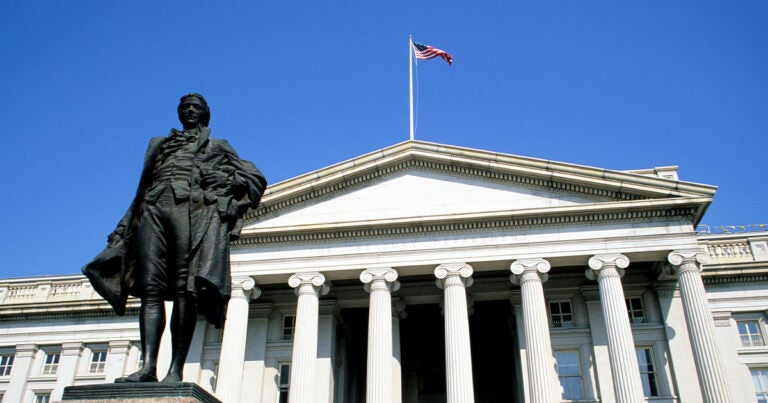New CBO Projections Show Lower Short-Term Rates than Previously Expected — but Longer-Term Rates Will Rise
The Congressional Budget Office (CBO) anticipates that short-term interest rates over the next several quarters will be lower than previously reported, but longer-term rates will be somewhat higher. The agency’s projections of economic growth through 2027 are similar to those from June, while the forecast for other major economic indicators, such as unemployment and inflation, were only revised slightly. Understanding interest rate trends is critical to the nation’s fiscal outlook because they are a significant factor for interest costs within the budget.
Changes to Interest Rate Projections
In CBO’s last full set of economic projections, which were released in June, the organization estimated that the federal funds rate would rise to a fourth-quarter average of 5.3 percent in 2024 before falling to 3.3 percent by the fourth quarter of 2027. However, the Federal Reserve decreased the target federal funds rate by more than CBO anticipated previously. In the December report, CBO estimates that the federal funds rate will average 4.6 percent in the fourth quarter of 2024 and fall to 3.4 percent within a couple of years. Despite the projected drop in the federal funds rate over the next three years, at 3.4 percent, the rate would be above its pre-pandemic level, which was 2.5 percent or lower from 2009 to 2021.
In June, CBO estimated that the interest rate on 10-year Treasury notes would average 4.5 percent during the fourth quarter of 2024. The 10-year rate was expected to fall nearly a full percentage point to 3.6 percent by 2027. CBO now expects 10-year Treasury notes to average 4.2 percent in the fourth quarter of 2024 and experience a more gradual decline, falling to 3.9 percent by late 2026.
Changes to Economic Growth and Other Projections
In its June forecast, CBO projected that real (inflation-adjusted) gross domestic product (GDP) would grow by 2.6 percent in 2024. CBO then forecasted a slowdown to 2.1 percent in 2025, 1.8 percent in 2026, and 1.7 percent in 2027. CBO’s updated projections display the same trend, although growth in 2024 was slower than expected (2.3 percent). CBO now expects real GDP growth to fall to 1.9 percent in 2025 and settle at 1.8 percent in 2026 and 2027.
CBO revised its June projections for unemployment in the fourth quarter of 2024 upwards from 3.9 to 4.2 percent by 2027 as unemployment was higher than expected in the second half of 2024. The unemployment rate estimations are generally consistent with the previous report; the 2027 projection increased by 0.1 percentage points to 4.4 percent.
Inflation, as measured by the price index for personal consumption expenditures, is expected to slow in 2025. CBO slightly revised inflation expectations for 2024 downwards by 0.2 percentage points (from 2.7 percent to 2.5 percent) and expects that the Fed achieve its 2 percent target rate by 2027.
How Changes in Economic Indicators Influence the Federal Budget
Fiscal health and economic strength are closely related, and CBO’s revised economic projections draw attention to the fiscal challenge in the United States.
High interest rates make it more expensive for the government to borrow money to fund its obligations. That leads to the accumulation of more debt and the potential for crowding out investment in other government priorities to pay increasing interest costs. Unfortunately, interest is already the fastest-growing area of the government budget, and elevated longer-term interest rates only intensify that trend.
CBO already projects that deficits will approach $2 trillion this year and grow in the future. Higher long-term interest rates and slowing economic growth imply that deficits could be even larger — policymakers should take notice.
Photo by Stefani Reynolds/Getty Images
Further Reading
The Fed Reduced the Short-Term Rate Again, but Interest Costs Remain High
High interest rates on U.S. Treasury securities increase the federal government’s borrowing costs.
What Types of Securities Does the Treasury Issue?
Let’s take a closer look at a few key characteristics of Treasury borrowing that can affect its budgetary cost.
Experts Identify Lessons from History for America Today
A distinguished group of experts to evaluate America’s current fiscal landscape with an historical perspective.


